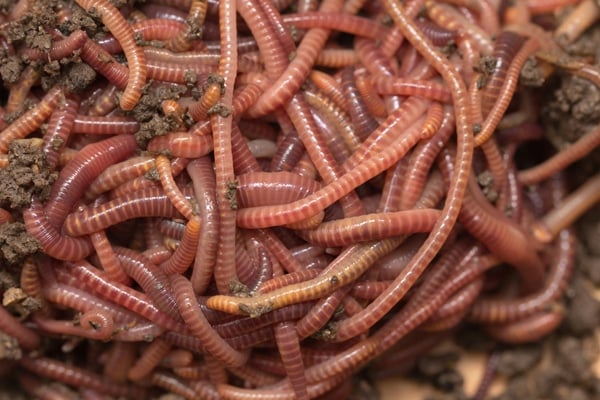Keep Your Lawn Green and Healthy with Expert Tips from Lake Hickory Bait
Keep Your Lawn Green and Healthy with Expert Tips from Lake Hickory Bait
Blog Article
Red Wigglers: The Unsung Heroes of Organic Waste Recycling
Red wigglers, or Eisenia fetida, offer as important agents in the organic waste recycling procedure, changing discarded products right into valuable vermicompost. As the world significantly seeks solutions to battle waste build-up and improve farming efficiency, understanding the duty of these worms ends up being vital.
What Are Red Wigglers?
The impressive strength of red wigglers, clinically called Eisenia fetida, underscores their vital duty in organic waste recycling. These tiny, reddish-brown earthworms are usually found in breaking down raw material, such as compost heap and manure loads. Lake Hickory Bait. Unlike other earthworm types, red wigglers thrive in nutrient-rich atmospheres and are extremely effective at breaking down organic materials, making them crucial for vermicomposting

(Lake Hickory Bait)Along with their role in waste decrease, red wigglers add to dirt health by improving soil structure and aeration with their delving tasks (Lake Hickory Bait). Their presence in composting systems not only improves disintegration prices but also promotes a sustainable technique to throw away management, illustrating their significance in environmental preservation initiatives
Advantages of Composting With Worms
Composting with worms, specifically red wigglers, supplies numerous advantages that enhance both waste management and soil health. These worms efficiently break down natural waste, transforming it right into nutrient-rich vermicompost that enhances soil. This process speeds up decomposition, permitting a faster recycling of kitchen scraps and other natural products contrasted to traditional composting methods.
Additionally, the vermicompost generated by red wigglers is including beneficial microorganisms, which aid boost soil structure, oygenation, and dampness retention. This improves the overall health of plants, advertising energetic growth and increased returns in gardens and agricultural setups. In addition, making use of worms in composting lessens the production of greenhouse gases, such as methane, adding to a much more sustainable waste management system.

Just How to Start Vermicomposting
Establishing a vermicomposting system is a simple procedure that can generate substantial advantages for both waste management and soil enrichment. To begin, select a suitable container, such as a plastic bin or wood box, with adequate air flow openings to make certain correct air movement. The dimensions should preferably be about 2 feet by 3 feet, allowing adequate area for the worms to flourish.
Following, prepare bedding product, which can contain shredded newspaper, cardboard, or coconut coir. This bedding should be moistened to create a suitable habitat for the worms. Once the bedding is in area, present red wigglers (Eisenia fetida) right into the container, commonly around one extra pound of worms for every single square foot of surface location.
Adhering to the positioning of worms, add organic waste, such as fruit and vegetable scraps, coffee premises, and smashed eggshells. Prevent adding dairy, meat, or oils, as these can develop smells and draw in insects. Position the container in a shaded, temperature-controlled area to maintain optimum conditions for worm activity. With these actions, you will successfully start a vermicomposting system that contributes to lasting waste monitoring and enhances your soil.
Preserving a Healthy And Balanced Worm Bin
(Red Wiggler Express)Maintaining a worm bin growing requires routine attention and like ensure the health and wellness of the red wigglers and the effectiveness of the composting process. Correct upkeep starts with keeping an eye on the wetness degrees; the bin must be damp however not waterlogged. A great policy of thumb is to preserve a consistency similar to a wrung-out sponge.
Oygenation is essential too. Delicately mixing the bed linen and food scraps every couple of weeks prevents compaction and makes sure that all worms have accessibility to oxygen. Additionally, it is necessary to feed the worms appropriately. A balanced diet plan of fruit and veggie scraps, coffee grounds, and crushed eggshells ought to be used in small amounts to avoid overfeeding, which can result in odors and bugs.
If the bin becomes too warm or cool, the worms may come to be stressed. By vigilantly handling these variables, one can keep a durable and productive worm bin.
Influence On Lasting Living
The effective upkeep of a worm bin not just profits the health and wellness of red wigglers but also adds substantially to sustainable living practices. By reusing organic waste, such as kitchen scraps and backyard particles, red wigglers help draw away considerable amounts of product from garbage dumps. This reduction in waste not just decreases greenhouse gas exhausts however also decreases the ecological burden linked with waste administration.
Furthermore, the castings produced by red wigglers act as a nutrient-rich organic fertilizer, boosting soil wellness and advertising plant growth. This all-natural choice to chemical fertilizers sustains sustainable agriculture and horticulture practices, reducing reliance on synthetic inputs that can hurt communities. Furthermore, worm composting cultivates understanding of waste administration, urging individuals and communities to take on more lasting habits.

Verdict
In summary, red wigglers offer as essential factors to organic waste recycling via their reliable decay of natural materials. By incorporating vermicomposting into waste management methods, individuals and communities can considerably decrease waste while promoting ecological sustainability.
Report this page